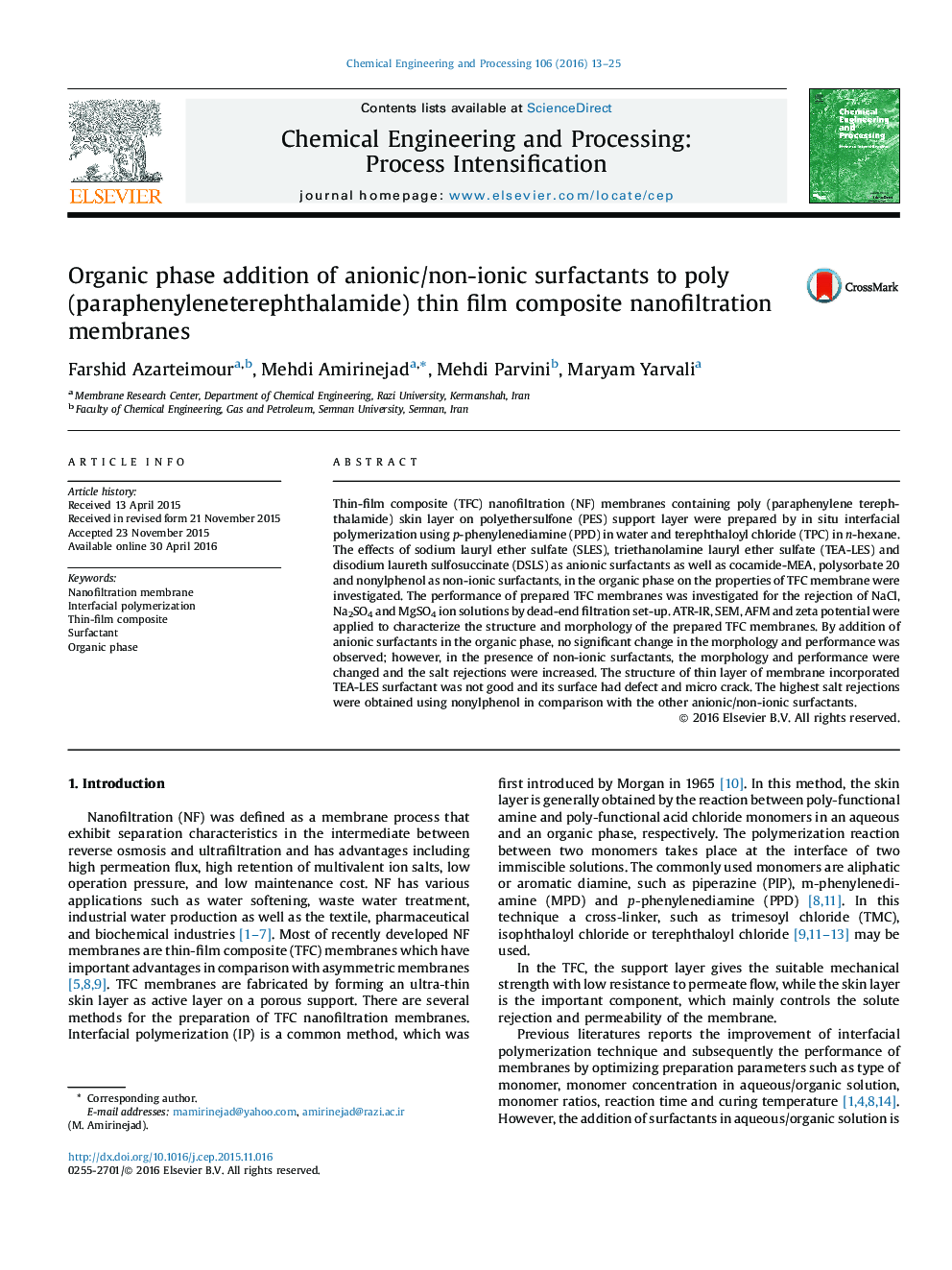| کد مقاله | کد نشریه | سال انتشار | مقاله انگلیسی | نسخه تمام متن |
|---|---|---|---|---|
| 687752 | 1460071 | 2016 | 13 صفحه PDF | دانلود رایگان |
• Preparation of nanofiltration (NF) membrane by interfacial polymerization.
• Organic phase addition of six different surfactants to thin film composite.
• Investigation of the surface morphology and the performance of prepared NF membranes.
• No change by addition of anionic surfactants.
• Increasing the salt rejection and changing the morphology using non-ionic surfactants.
Thin-film composite (TFC) nanofiltration (NF) membranes containing poly (paraphenylene terephthalamide) skin layer on polyethersulfone (PES) support layer were prepared by in situ interfacial polymerization using p-phenylenediamine (PPD) in water and terephthaloyl chloride (TPC) in n-hexane. The effects of sodium lauryl ether sulfate (SLES), triethanolamine lauryl ether sulfate (TEA-LES) and disodium laureth sulfosuccinate (DSLS) as anionic surfactants as well as cocamide-MEA, polysorbate 20 and nonylphenol as non-ionic surfactants, in the organic phase on the properties of TFC membrane were investigated. The performance of prepared TFC membranes was investigated for the rejection of NaCl, Na2SO4 and MgSO4 ion solutions by dead-end filtration set-up. ATR-IR, SEM, AFM and zeta potential were applied to characterize the structure and morphology of the prepared TFC membranes. By addition of anionic surfactants in the organic phase, no significant change in the morphology and performance was observed; however, in the presence of non-ionic surfactants, the morphology and performance were changed and the salt rejections were increased. The structure of thin layer of membrane incorporated TEA-LES surfactant was not good and its surface had defect and micro crack. The highest salt rejections were obtained using nonylphenol in comparison with the other anionic/non-ionic surfactants.
Journal: Chemical Engineering and Processing: Process Intensification - Volume 106, August 2016, Pages 13–25
